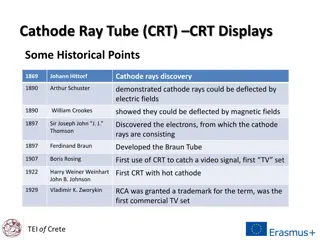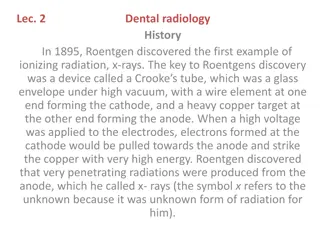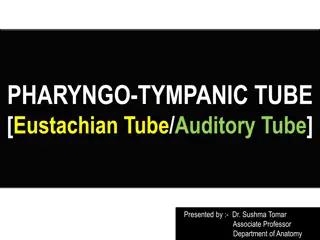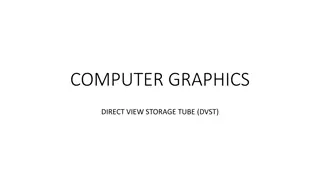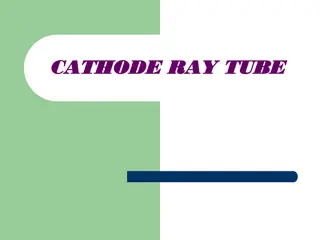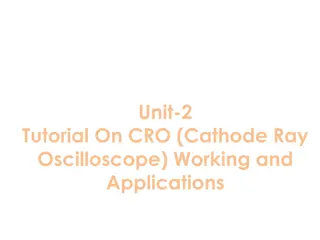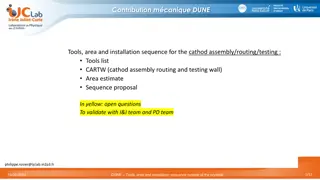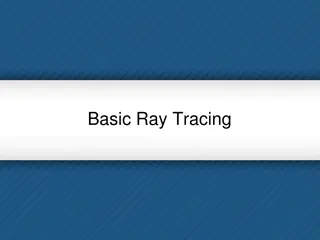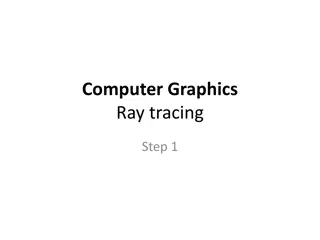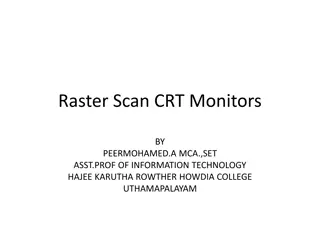Understanding Cathode Ray Tube (CRT) Technology in Computer Graphics
Explore the technology of Cathode Ray Tube (CRT) used in traditional computer monitors and televisions. Learn about its components such as the electron gun, control electrode, focusing system, deflection yoke, and phosphorus-coated screen. Discover how a CRT works through the movement of electron beams within the tube. Dive into the process of generating luminous spots on the screen and controlling the beam's position using electrostatic deflection plates.
Download Presentation

Please find below an Image/Link to download the presentation.
The content on the website is provided AS IS for your information and personal use only. It may not be sold, licensed, or shared on other websites without obtaining consent from the author. Download presentation by click this link. If you encounter any issues during the download, it is possible that the publisher has removed the file from their server.
E N D
Presentation Transcript
COMPUTER GRAPHICS CATHODE RAY TUBE(CRT)
What Is Cathode Ray Tube(CRT)? CRT stands for Cathode Ray Tube. CRT is a technology used in traditional computer monitors and televisions. The image on CRT display is created by firing electrons from the back of the tube of phosphorus located towards the front of the screen.
Components Of CRT 1. Electron Gun: Electron gun consisting of a series of elements, primarily a heating filament (heater) and a cathode. The electron gun creates a source of electrons which are focused into a narrow beam directed at the face of the CRT. 2. Control Electrode: It is used to turn the electron beam on and off. 3. Focusing system: It is used to create a clear picture by focusing the electrons into a narrow beam.
Components Of CRT 4. Deflection Yoke: It is used to control the direction of the electron beam. It creates an electric or magnetic field which will bend the electron beam as it passes through the area. In a conventional CRT, the yoke is linked to a sweep or scan generator. The deflection yoke which is connected to the sweep generator creates a fluctuating electric or magnetic potential. 5. Phosphorus-coated screen: The inside front surface of every CRT is coated with phosphors. Phosphors glow when a high-energy electron beam hits them. Phosphorescence is the term used to characterize the light given off by a phosphor after it has been exposed to an electron beam.
Working Of CRT The working of CRT depends on the movement of electrons beams. The electron guns generate sharply focused electrons which are accelerated at high voltage. This high- velocity electron beam when strikes on the fluorescent screen creates luminous spot. After exiting from the electron gun, the beam passes through the pairs of electrostatic deflection plate. These plates deflected the beams when the voltage applied across it. The one pair of plate moves the beam upward and the second pair of plate moves the beam from one side to another. The horizontal and vertical movement of the electron are independent of each other, and hence the electron beam positioned anywhere on the screen . The working parts of a CRT are enclosed in a vacuum glass envelope so that the emitted electron can easily move freely from one end of the tube to the other.



